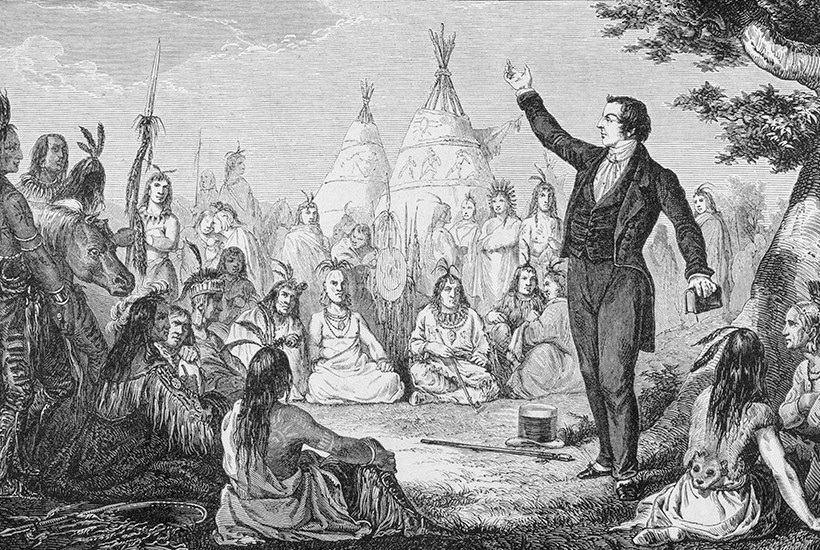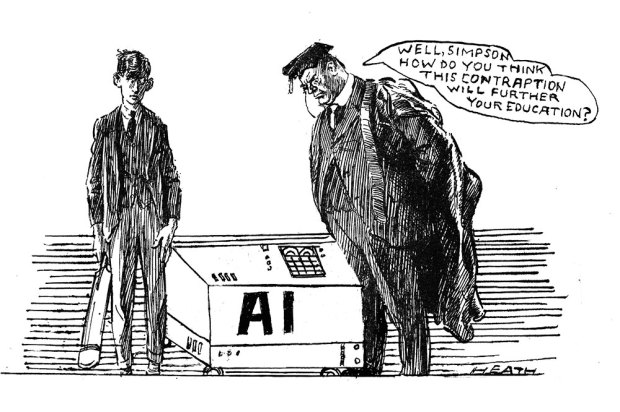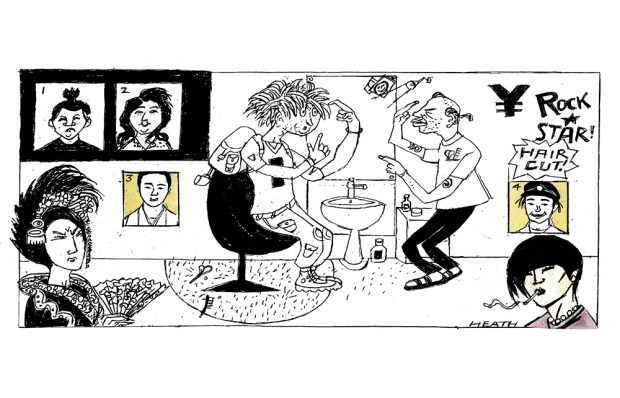The new three-part Netflix series Murder Among the Mormons is attracting big audiences, and deservedly so. Finally someone has made a major documentary about Mark Hofmann, the squeaky-voiced Mormon nerd who was both the most brilliant document-forger in history and a psychopathic murderer.
In the early 1980s, the young Hofmann manufactured a series of documents that portrayed its prophet Joseph Smith — the discoverer of the ‘gold plates’ that supposedly described a great Israelite civilisation in America — as a conman up to his ears in the occult. In 1985, panicking that he was about to be discovered, he blew up two Mormons with pipe bombs, was caught by police and is serving life in jail.
Murder Among the Mormons is gripping stuff if you don’t know the story. But if, like me, you’ve been obsessed with the case for years, you’ll notice that the filmmakers were nervous about discussing the incredibly damaging information about the Church of Jesus Christ of Latter-day Saints that the case revealed.
Hofmann, a secret atheist who hated the church, set about creating letters from the 1830s and 1840s that related to a subject that gives Mormon leaders nightmares: the squalid behaviour of Smith, who by the time he was murdered by an anti-Mormon mob in 1844 had become a shameless abuser of women, including teenage girls.
Mormons refer to the polygamy of their early leaders as ‘plural marriage’; they were forced to outlaw the practice in 1890. In fact, even ‘polygamy’ is a euphemism for how Smith preyed on his female followers. Some of his wives were already happily married; one of them, Helen Kimball, was just 14 when the 37-year-old Smith told her that marrying him would secure her eternal salvation.
During Smith’s lifetime, newspapers were reporting on the mass seduction of Mormon women by the prophet and his inner circle. They responded with flat-out lies. In 1842, 18-year-old Martha Brotherton revealed that Brigham Young locked her in a room and tried to ‘marry’ her. The Mormons charmingly called her a whore: at this point, Smith was still trying to keep the doctrine of polygamy secret from his only legal wife, Emma.
If Hofmann hadn’t been caught, he planned to forge a pile of documents relating to Smith’s polygamy. But why bother? By 1985, damning information had been in the public domain for 140 years. The answer is that the ‘discovery’ of lost documents guarantees media coverage. The Latter-day Saints (LDS) would have thrown money at Hofmann in order to keep them secret.
The church had already bought the so-called ‘salamander letter’, which claimed that when the teenage Smith was digging for the gold plates that yielded the Book of Mormon he encountered a magical white salamander. The LDS couldn’t stop the contents leaking out — with the result that, until the forgery was exposed, Mormon theology briefly incorporated a talking lizard.
The Netflix documentary trod carefully here. The filmmakers needed church support in order to secure Mormon-owned television footage. And they realised that Murder Among the Mormons would be more devastating if it went easy on the church. That way, devout Mormons, who wouldn’t dream of seeing the savagely satirical musical The Book of Mormon, would watch it and start asking unsettling questions.
One of the greatest achievements of the Church of Jesus Christ of Latter-day Saints — as impressive as attracting 15 million followers, or acquiring a net worth of untold billions — has been protecting its followers from its history. It hasn’t been done in good faith, exactly: too many incontrovertible facts have been swept under the carpet. But it has been done by good people inspired by genuine religious convictions.
In Utah, Mormonism is the established religion, not a cult: the church’s president and 12 apostles in Salt Lake City are descended from the pioneers led there by Brigham Young in 1847. Ordinary Mormons are the most God-fearing people in America. (The fact that they believe in a multiplicity of gods is something LDS missionaries rarely mention on the doorstep.)
The LDS church runs Brigham Young University, home to legendary sports teams. Its missionaries have gone on to become a Republican nominee for President of the United States (Mitt Romney), a Democrat Senate majority leader (Harry Reid) and professors at Harvard Business School. Mormons flourish in Wall Street and the CIA.
Add to this the fact that membership is still growing, albeit slowly and mostly in developing countries, and you can see why sociologist Rodney Stark believes that the LDS will become the first major world religion since Islam… Or it could fall apart. Mormonism has one thing in common with Islam: both were founded by men whose polygamy is a source of embarrassment. But the evidence about Mohammed’s wife Aisha being six when they married is ancient and fragmentary.
Smith’s wrongdoings were reported in detail in his own lifetime. Witnesses speak of spectacular drunkenness; the church’s own historians admit that ‘he did not always refuse the wine that maketh the heart glad’. He lied compulsively, especially about polygamy. By the end of his life, according to Lawrence Wright in the New Yorker: ‘He was in a kind of marital frenzy, taking an average of one new wife per month.’
What about the gold plates and non-existent civilisations of the Book of Mormon? Smith himself came to believe in these stories and so perhaps we can file them under religious faith; after all, there’s no non-Christian evidence of the Resurrection. But Smith’s later discovery of the Book of Abraham, supposedly written by the patriarch himself, falls into a different category. It’s written on genuine papyri that Smith bought from a travelling mummy exhibition and ‘translated’. He didn’t know that Egyptian script would soon be decipherable. When it was, the Book of Abraham turned out to be a bog-standard funerary text.
This sort of con trick is one reason the Mormons employ ex-lawyers as historians: they have to defend the indefensible. But the internet has made that impossible. In 2014, the church was forced to confirm that Smith had between 30 and 40 wives. Older members were aghast. Younger ones already knew and are now quietly apostatising.
The paradox of Mormonism — that the bizarre, improvised beliefs of 19th–century farmers have been inherited by well–educated American conservatives — could end up destroying the church’s demographic base without touching its wealth.
What the Latter-day Saints desperately need is a generation of Romneys: bright, enterprising young citizens who are prepared to ignore the fact that their ‘-prophet, seer and revelator’ was a serial abuser of vulnerable women who broke up marriages and groomed pubescent girls. But, in the 21st century, all the money in the world won’t buy you that.
Got something to add? Join the discussion and comment below.
Get 10 issues for just $10
Subscribe to The Spectator Australia today for the next 10 magazine issues, plus full online access, for just $10.
You might disagree with half of it, but you’ll enjoy reading all of it. Try your first month for free, then just $2 a week for the remainder of your first year.














Comments
Don't miss out
Join the conversation with other Spectator Australia readers. Subscribe to leave a comment.
SUBSCRIBEAlready a subscriber? Log in